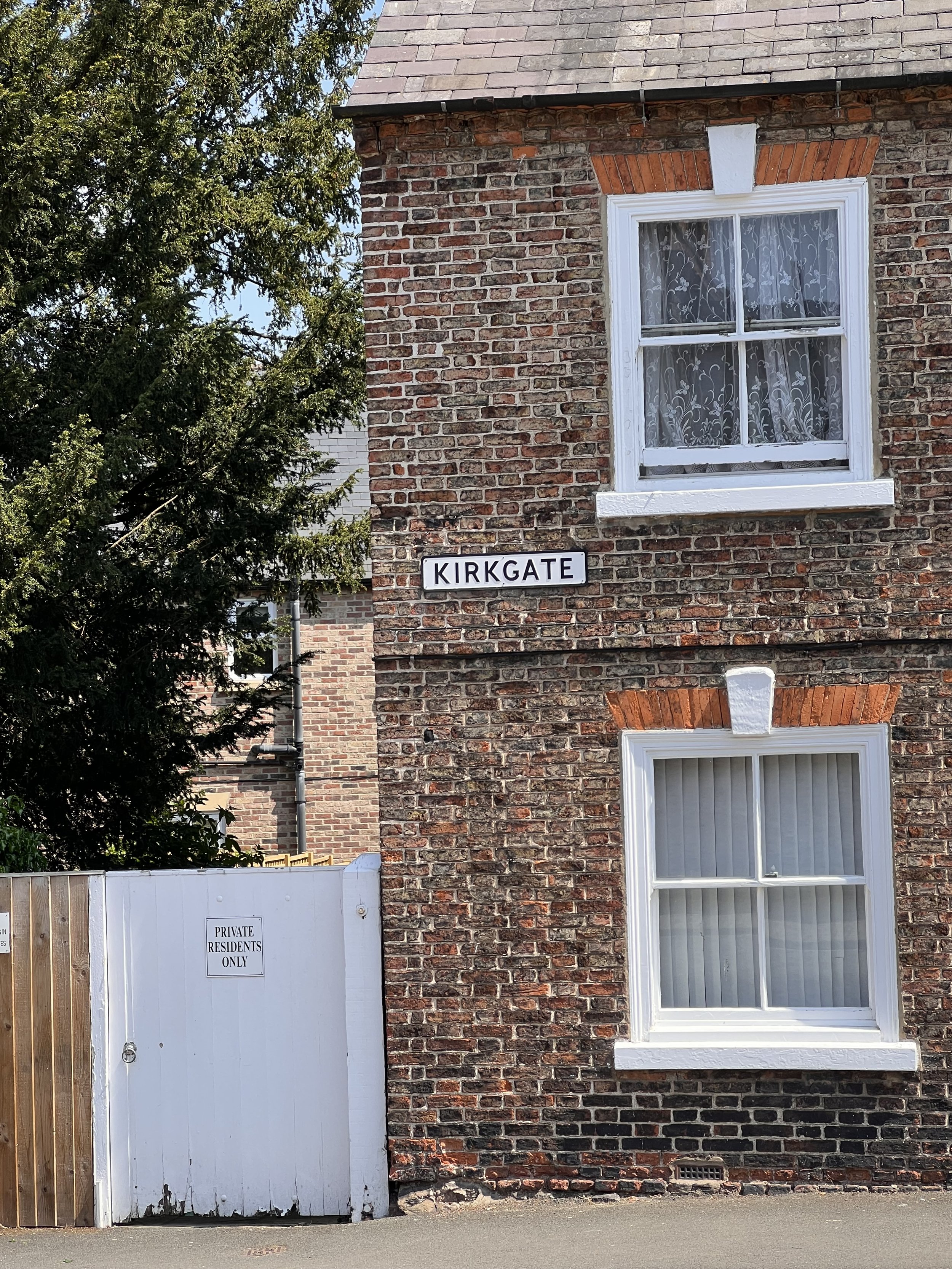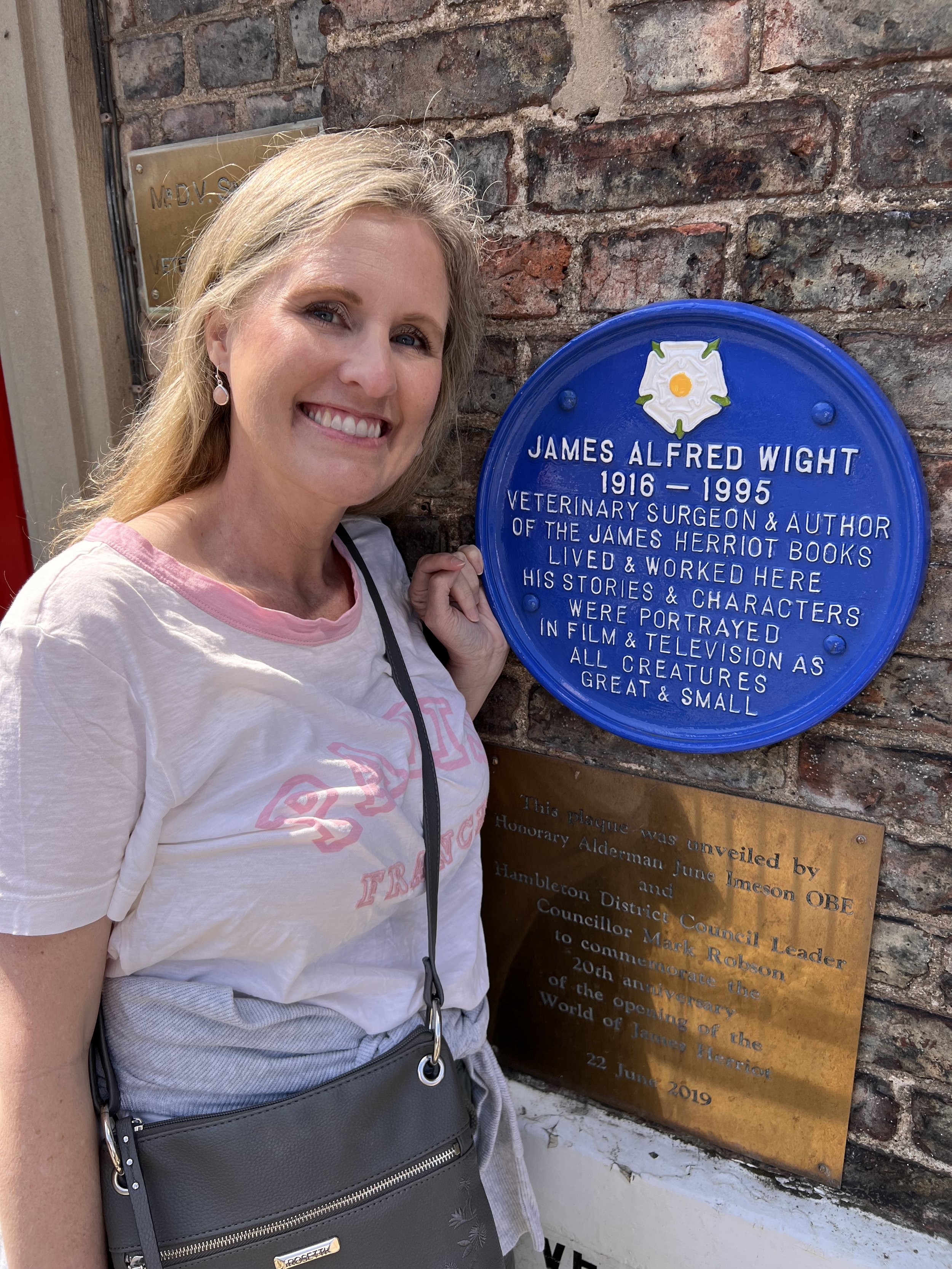The Dales
“If having a soul means being able to feel love and loyalty and gratitude, then animals are better off than a lot of humans.”
Yorkshire is a county in northern England known for its Roman and Viking heritage, medieval abbey ruins, and North York Moors and Yorkshire Dales National Parks.
Yorkshire is also the home of literary giants like Bram Stoker, the Brönte sisters, Dame Susan Hill, Charles Dickens, and James Herriot.
In order to see the most of this historic region, we first based our stay in the City of York, as covered in our last post (May 21-24).
We have now moved north to Ripon to better situate ourselves for visits to the remote Yorkshire Dales (May 25-June 2).
The interactive map below will let you see Ripon, York to the southeast, and both national parks.
We found a really great apartment in Ripon and put together this short video tour so you can see where we’re staying: https://www.youtube.com/watch?v=BHakBaYNKVE
All Creatures Great and Small
If you’ve ever read the books or watched the 2020 TV series on PBS, then you’ll understand why visiting Kirkgate street in the village of Thirsk in the Yorkshire Dales is a bit of a pilgrimage.
The tall building on the left is the surgery at 23 Kirkgate, known in his books as Skeldale House, Darrowby. (In England they call it a surgery rather than a vet’s office.)
The church in the background is where James and Joan were married in 1941. (Remember that these are all the actual locations and not from any of the TV shows.)
Advertising oneself is against the Royal College of Veterinary Surgeons Code of Practice, so James Alfred “Alf” Wight wrote under the pen name James Herriot.
The practice owner was Donald Sinclair—changed to Siegfried in the books.
Alf was a football (soccer) enthusiast, and he both admired and related to the professional footballer Jim Herriot, the Birmingham City's goalkeeper and a fellow Scotsman who travelled south to work with his hands (Alf was from Glasgow).
The (unlocked) white box to the left of the front door is where medicines were frequently left for “after office hours” collection by farmers.
Entrance
The Dining Room had a dual role when the Wight family lived here.
It was used as a dining room on special occasions only. During the week it was used as an office, a secretary sitting at the desk to the left of the window, typing and preparing accounts.
It would also serve as a waiting room for clients coming to see the vets or to settle their accounts and for veterinary representatives.
Comfortably furnished, the Sitting Room was a place to relax surrounded by books and music.
Here Alf would listen to the radiogram, Bing Crosby's Careless Hands being a particular favorite. Mrs Wight would sit and mend.
The children, Jim and Rosie, would play with homemade toys or the family would play cards, draughts, or games such as Ludo or Monopoly.
“Thirsk 2297.”
From the Dispensary, the vets would make up and dispense the drugs used to treat animals. As mentioned, medicines would frequently be left in the white box at the front door for “after office hours” collection by farmers.
Prior to the early 1950's, there was little or no small animal (cats and dogs) practice; the main work of the vets being carried out on large animals on farms.
With the start of small animal treatment, examinations and operations would be carried out in this Consulting Room. The room was also used for the storage of veterinary equipment.
The Breakfast Room was a warm, cosy room with a coal fire burning in cold weather—no central heating in those days! It was very much a day-to-day family room where meals were taken. It was not unusual for Alf to perform operations on small animals on the dining table.
The Kitchen was the hub of the Wight family life at Kirkgate. The room where everything happened from meals to homework—all centered round the large kitchen table.
Next door is the Scullery, where there was the only sink on the ground floor of the house. All the washing-up and some food preparation was done here, as was the washing, drying, and ironing of clothes.
Some of you who lived in the 50’s might recognize certain items.
Think laundry is a chore now? Imagine having to light and keep a fire under the basin to warm the water.
Good ol’ Reader’s Digest. $100 says someone reading this still has this December 1988 edition sitting in a stack somewhere in their home.
The famous Austin Seven—an economy car produced from 1923 until 1939 in the UK by Austin.
Nicknamed the "Baby Austin," it was one of the most popular cars produced for the British market at that time; it also sold well abroad. Its effect on the British market was similar to that of the Ford Model T in the US.
This display in the museum reads, “To this day many American visitors arrive in Thirsk to seek out Skeldale House and to explore the beautiful countryside in which James Herriot worked.”
A statue of Alf stands in the home’s back garden.
“I’ll tell you what, you can get a good look at a T-bone by sticking your head up a bull’s ass, but I’d rather take the butcher’s word for it.” -Big Tom Callahan, Callahan Auto Parts
Wedding
At 8 o’clock, on a bitterly cold morning on November 5, 1941, James Alfred Wight (James Harriot) and Joan Catherine Anderson Danbury (Helen) were married here at St Mary Magdalene Church in Thirsk. Donald Sinclair (Siegfried) was the best man.
Beautify wood ceiling.
Where the “real” Helen and James said, “I do.”
Check out this amazing original Medieval door, with a wicket. A wicket gate, or simply a wicket, is a pedestrian door or gate, particularly one built into a larger door or into a wall or fence. This door has hung here for over 500 years. In typical Medieval, defensive design, the oak planks were attached vertically at the front and another layer of planks were attached horizontally at the back of the door.
Looking from the church back toward the surgery.
Thirsk
Thirsk Market Place, 2023
Thirsk Market Place, 1940—This is the scene that Alf Wight first took in as he hopped down from the bus that brought him to Thirsk (Darrowby in the books & TV series). Ahead lay his first meeting with Donald Sinclair, the beginnings of the James Herriot stories were about to unfold.
Alf’s favorite place for a pint was the Golden Fleece. We stopped in and toasted Alf Wight/James Herriot.
Rievaulx Abbey
The old local pronunciation of Rye Dale (river valley) was amalgamated with the Norman-French valor or valle (valley) and changed to the current spelling when education brought a general familiarity with the French language.
Rievaulx Abbey (pronounced REE-voh) is located in the small village by the same name.
The area was created by the River Rye, which snakes through and sustains this lush valley (dale) within North York Moors National Park. Love the sign post!
We approached the Abbey by crossing the Rye Dale over this old single-lane stone bridge.
A moment further down the tiny country lane, and Rievaulx Abbey almost materializes out of the greenery.
It would be difficult to express in words the beauty of this site. The Cistercians who built the abbey wanted to return to the basic principles of monasticism—following a daily routine of church services, reading, and manual work—and you simply could not ask for a more perfect setting in furtherance of those goals.
It’s a deeply romantic setting, so much so you can almost hear Gregorian chanting still echoing through the valley.
“A shadow—a presence marking its own absence.”
Abbot William and 12 monks, of the reforming and austere Cistercian Order founded Rievaulx Abbey in 1132.
Rievaulx prospered and there were soon other Cistercian settlements in northern England and Scotland.
By the 1160s the abbey was home to 640 men who dedicated their lives to the service of God. The community comprised choir monks, who spent a large part of their day in church, and a new type of monk called lay brothers, who worked the land.
From the western door looking east through the Nave. The Crossing is largely intact, with the Chancel and High Alter in the distance.
Standing on the old Cloister walk. The garth (square garden) is now grass. The Crossing is the large section behind me, the roofless Nave is to the left, and the Chancel is to the right.
The remains of the Chapter house.
The Refractory, where the monks gathered to eat. (Imagine a wooden floor at the top of the darker section of stones. Below that was a cellar.)
The monks ate in silence while listening to a reading delivered from a pulpit set in the large recess in the wall to the right. The community sat around the edges of the room at tables supported by stone legs set into the floor..
The monks' diet was largely vegetarian. The main hot food was a thick soup, made from beans and vegetables. Bread and ale were also staples. Fish, eggs and cheese were allowed on special occasions.
The beauty of the Yorkshire Dales approaches the mythical, and Rievaulx Abbey may easily be one of the most romantic settings we’re ever likely to encounter.
After Rievaulx Abbey, we drove about an hour to Harrogate where we had dinner at Wagamama and then caught the 7:00 opening night screening of The Little Mermaid at the ODEON Harrogate cinema.
Ignore the haters (don’t like the actor…the movie is too dark…Sebastian and Flounder are too lifelike…they changed a few words in a song…blah, blah, blah!) Halle Bailey’s voice is phenomenal, the underwater effects are amazing, and there are great new songs. The movie was great; you’ll enjoy it!












































